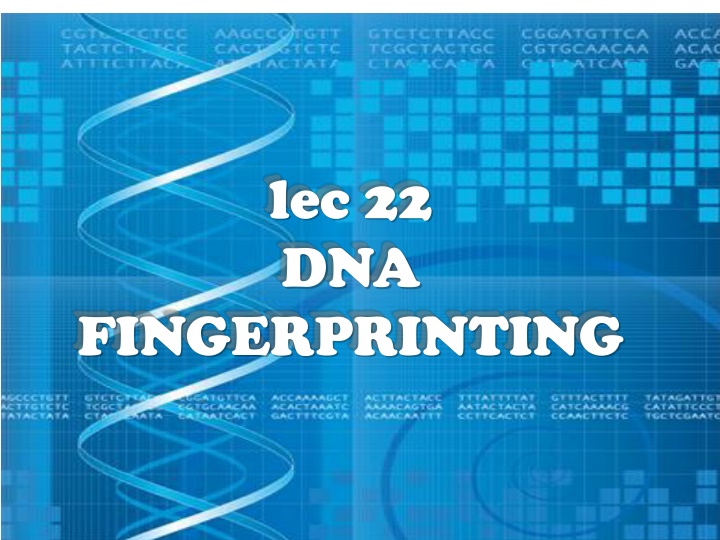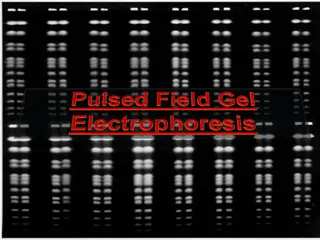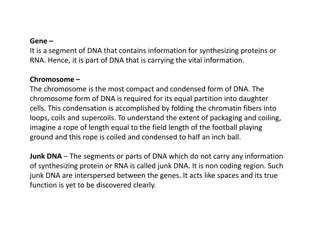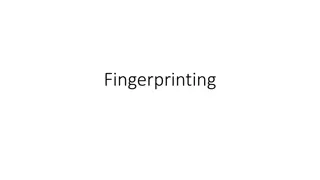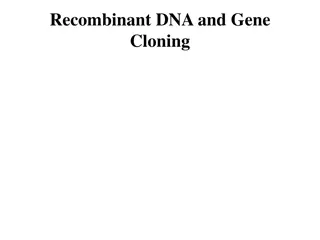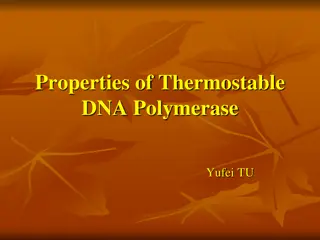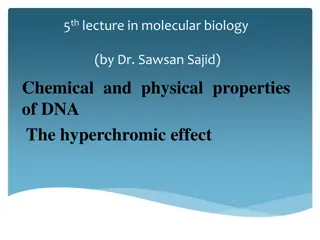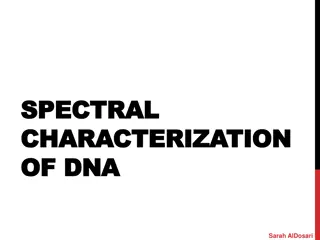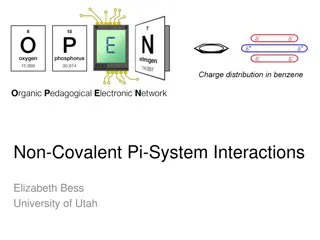DNA Fingerprinting: Identification at Molecular Level
DNA fingerprinting is a technique used to identify individuals based on unique DNA sequences. Developed by Alec Jeffreys, it involves analyzing repetitive DNA patterns to create a distinct genetic profile. Different DNA sources such as blood, semen, hair, and more can be used for analysis, highlighting the variability in DNA sequences among individuals. This method, based on analyzing the sizes of DNA fragments produced by restriction enzymes, has been integral in forensic investigations and scientific research.
Download Presentation

Please find below an Image/Link to download the presentation.
The content on the website is provided AS IS for your information and personal use only. It may not be sold, licensed, or shared on other websites without obtaining consent from the author.If you encounter any issues during the download, it is possible that the publisher has removed the file from their server.
You are allowed to download the files provided on this website for personal or commercial use, subject to the condition that they are used lawfully. All files are the property of their respective owners.
The content on the website is provided AS IS for your information and personal use only. It may not be sold, licensed, or shared on other websites without obtaining consent from the author.
E N D
Presentation Transcript
lec 22 DNA FINGERPRINTING
What is DNA fingerprinting? It is a technique, by which an individual can be identified at molecular level. With the advancement of science and technology. Scientists have chosen repeating sequences in the DNA, which are present in all individuals on different chromosomes, and are known to vary from individual to individual except in identical twins. These are used as genetic markers to identify the individual.
A Historical Perspective In the course of his research on variability in human DNA, Alec Jeffreys developed a method of forensic DNA typing. This method, termed DNA Fingerprinting , was used for the first time to solve two rape/murder cases in the UK in 1987. Jeffreys was knighted in 1994 for Services to Science, and has been the recipient of numerous other honours
DNA Fingerprint Basics If DNA is cut with a restriction enzyme that recognizes sites on either side of the region that varies, DNA fragments of different sizes will be produced. A DNA fingerprint is made by analyzing the sizes of DNA fragments produced from a number of different sites in the genome that vary in length. The more common the length variation at a particular site and the greater the number the sites analyzed, the more informative the fingerprint.
Potential Sources of DNA Blood Semen Hair with roots Skin, dandruff Sweat stains Vaginal fluids Nasal secretions (Mucosal surfaces) Urine Feces (White blood cells) (Sperm cells) (Hair follicle cells) (Skin cells) (Skin cells sloughed off) (Mucosal surfaces) (Mucosal surfaces) (Digestive system cells)
What creates this unique pattern? Satellite DNA: repetitive DNA sequence. Macrosatellite: core sequence 100 to 6500bp Minisatellite: core sequence of 10-20bp repeated multiple times Microsatellite: small arrays of tandem repeats of 2 to 4bp in length (AT)n account for 0.3% of the human genome (CATG)n accounts for 0.5% of the human genome
Repeats of Satellite DNA Repeat units vary in length from 2bp to long stretches of 6000bp or more These repeat units are lined up head to tail and compose satellite DNA and are interspersed throughout the genome The number of units varies person to person Thus these sequences are called VNTRs (variable number of tandem repeats) A VNTR is a locus that is hypervariable due to a large number of alleles each characterized by a different number of repeat units
How to make a DNA fingerprint part 1 DNA is extracted from sample. Cut into millions of small fragments Using restriction endonucleases Recognize specific base sequences in DNA Cut DNA at those recognition sites
How to make a DNA fingerprint part 2 DNA fragments are separated by electrophoresis (Fragments are exposed to electric current in a trough of gel) Different fragments move at different rates through the gel.
How to make a DNA fingerprint part 2 The smaller the fragment the faster it moves. DNA is separated into bands according to size of the fragments.
How it is done part 3 The pattern of fragments are transferred to a nylon membrane by a process called Southern blotting.
How make a DNA fingerprint part 4 Radioactive probes are used to attach to specific parts of the fragments. Any probes not bound are washed off. The membrane is dried
How make a DNA fingerprint part 5 The nylon sheet is placed under X-ray film. The radioactive probes on the DNA fragments expose the film. This produces visible pattern of light and dark bands which is unique to each individual.
Applications of DNA Fingerprinting 1.Paternity and Maternity person inherits his or her VNTRs from his or her parents Parent-child VNTR pattern analysis has been used to solve standard father-identification cases
Applications of DNA Fingerprinting 2. Criminal Identification and Forensics DNA isolated from blood, hair, skin cells, or other genetic evidence left at the scene of a crime can be compared
Applications of DNA Fingerprinting 3. Personal Identification The notion of using DNA fingerprints as a sort of genetic bar code to identify individuals has been discussed 4.Diagnosis of Inherited Disorders diagnose inherited disorders in both prenatal and newborn babies These disorders may include cystic fibrosis, hemophilia, Huntington's disease, familial Alzheimer's, sickle cell anemia, thalassemia, and many others.
Applications of DNA Fingerprinting 5.Developing Cures for Inherited Disorders By studying the DNA fingerprints of relatives who have a history of some particular disorder identify DNA patterns associated with the disease .
Advantages of DNA Fingerprinting DNA typing can routinely provide exclusion probabilities on the order of one in billions 2.Exquisite sensitivity DNA can be amplified smaller sample sizes are adequate
Advantages of DNA Fingerprinting 3.Application to any body tissue DNA testing can be conducted with any sample having nucleated cells For example hairs, semen, urine and saliva 4.DNA is stable in comparison to proteins resistant to degradation by common environmental insults DNA is also long-lived in comparison to protein
Disadvantages of DNA Fingerprinting Problems with determining probability DNA fingerprinting is not 100% assured VNTR are results of genetic inheritance cannot have a stable probability of occurrence. Occurrence of certain VNTR pattern depends on an individual s genetic background.
Disadvantages of DNA Fingerprinting 2. Technical difficulties in DNA fingerprinting Errors in the hybridization and probing process in carrying out DNA fingerprinting Some analysis of DNA sample involves amplification of sample. A tiny amount of skin cell from the lab technician can cause profound error.
